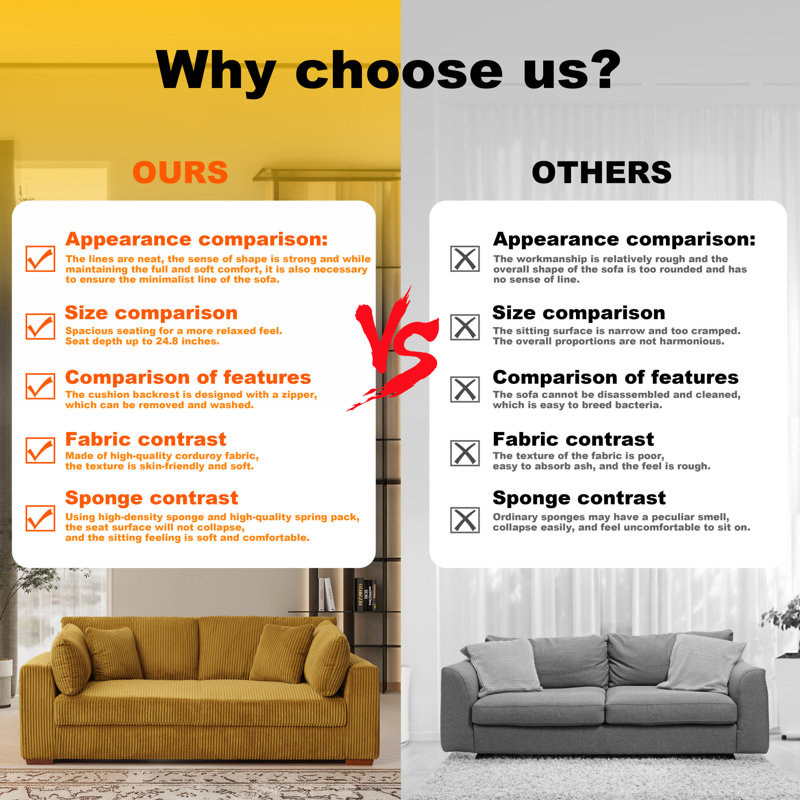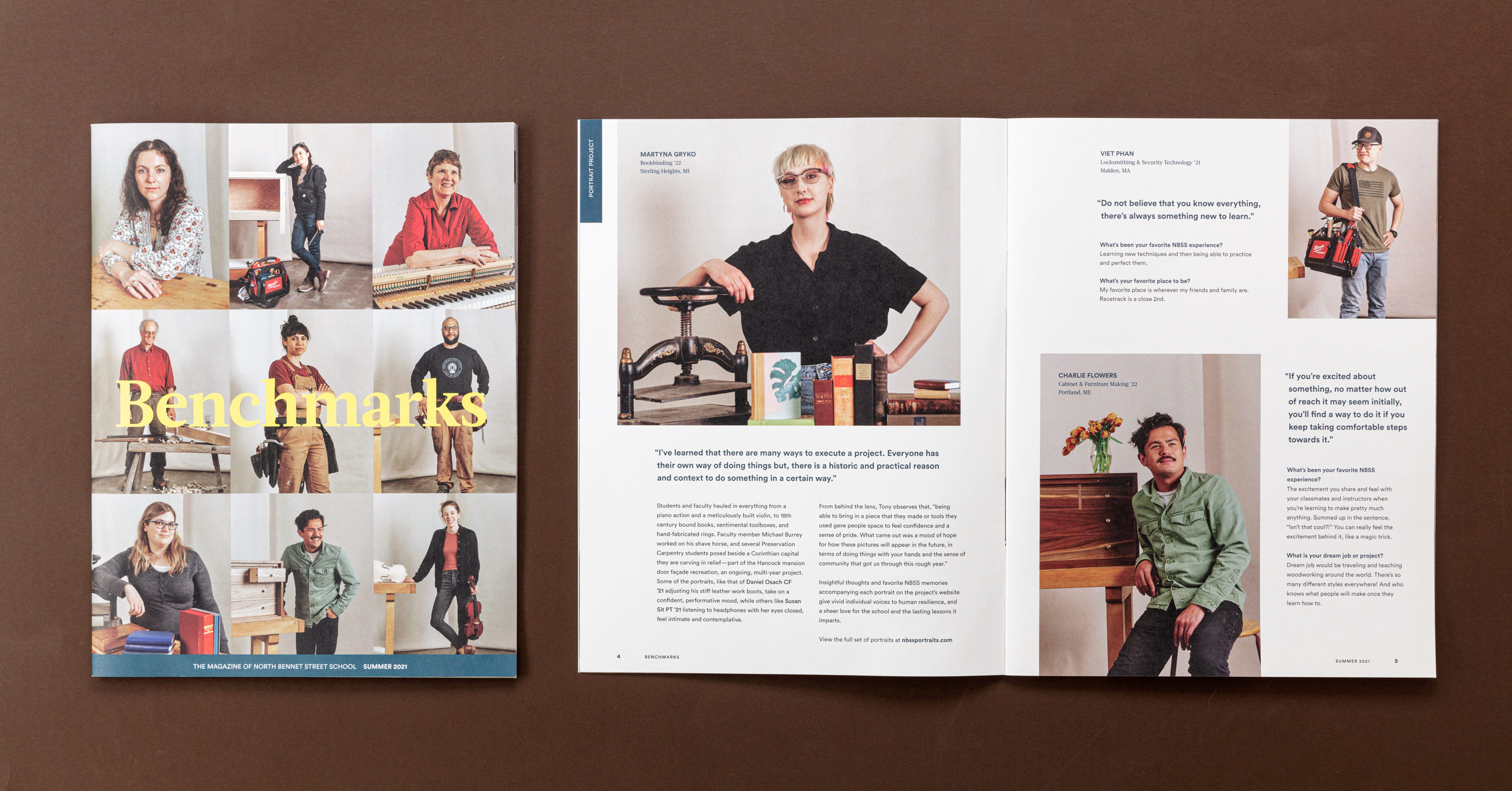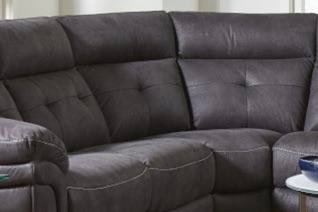As an Amazon Associate I earn from qualifying purchases.
Does furniture feeling rough make sense? Yes, it can.
While smooth surfaces are common, rough textures have their own charm. In today’s design world, texture plays a key role. Smooth furniture is sleek but lacks character. Rough textures, on the other hand, offer warmth and depth. They give a space a unique touch, making it feel more inviting.
Imagine a rustic wooden table or a cozy, woven chair. These pieces bring a sense of nature indoors. They add a tactile experience that smooth surfaces can’t match. Rough textures can make a home feel lived-in and comfortable. So, let’s explore why furniture with a rough feel can be a great choice for your space.
Introduction To Furniture Comfort
Furniture comfort plays a critical role in our daily lives. We spend a significant amount of time sitting on chairs, lounging on sofas, and sleeping on beds. But how often do we consider the comfort level of these pieces? Whether at home or in the office, comfortable furniture can greatly enhance our well-being.
Importance Of Comfort
Comfortable furniture helps reduce stress and fatigue. When you sit on a well-designed chair, your body feels supported. This support prevents unnecessary strain on your muscles and joints. A comfortable sofa allows you to relax and unwind after a long day. It provides the necessary support for your back and neck.
Impact On Daily Life
Comfortable furniture affects your daily activities. It can enhance your productivity at work. When you sit comfortably, you can focus better. You are not distracted by aches and pains. At home, a cozy chair or sofa invites relaxation. It creates a peaceful environment, perfect for reading or watching TV.
Quality sleep depends on a comfortable bed. A good mattress supports your body and ensures restful sleep. Without proper comfort, you may experience discomfort and restlessness. This can lead to sleep deprivation and affect your overall health.

Credit: www.wayfair.com
Exploring Furniture Styles
Choosing the right furniture style can change your space. Different styles bring unique feels and functions. From sleek modern designs to timeless classic aesthetics, furniture styles offer many options. Each style reflects a different personality and lifestyle.
Modern Designs
Modern furniture designs focus on simplicity and function. These pieces often use clean lines and minimal decoration. Common materials include glass, metal, and polished wood. Colors in modern designs are usually neutral. Think black, white, and grey. This style creates an open and airy feel. It’s perfect for those who love a clutter-free space.
Classic Aesthetics
Classic furniture styles embrace elegance and tradition. These pieces often feature ornate details and rich textures. Wood is a popular material in classic furniture. Dark finishes and intricate carvings add to the charm. Colors in classic designs are warm and inviting. Picture deep browns, reds, and golds. This style suits those who appreciate timeless beauty.
Materials And Textures
Choosing the right furniture involves considering various factors. One of the most important is the materials and textures. The feel of your furniture can affect your comfort and the room’s overall vibe. The right material can make a huge difference in your daily life.
Soft Vs. Firm
Soft furniture offers a cozy and inviting feel. It is great for relaxing after a long day. Think plush sofas and cushy chairs. On the other hand, firm furniture provides better support. It is often preferred for workspaces or dining areas. Both have their advantages. The choice depends on your needs and preferences.
Natural Vs. Synthetic
Natural materials like wood, cotton, and leather bring warmth to a space. They often have unique textures and patterns. These materials are also durable and can age beautifully. Synthetic materials, like polyester and acrylic, offer a different set of benefits. They are usually more affordable and resistant to stains. They can mimic the look and feel of natural materials.
The choice between natural and synthetic depends on your lifestyle and budget. Each has its own charm and practical benefits. Think about what suits your home best.
Balancing Comfort And Style
Creating a home that feels both comfortable and stylish can be challenging. Many people struggle to find furniture that meets both needs. Some pieces are very stylish but lack comfort. Others offer comfort but don’t match the home’s design. Finding the right balance is key to a happy living space.
Finding The Right Mix
Start by identifying your main needs. Do you want a cozy place to relax? Or a modern look for entertaining guests? Knowing what you need helps narrow down choices. Look for furniture that offers both support and visual appeal. Soft fabrics can add a cozy feel. Sleek designs can add a modern touch.
Test furniture before buying. Sit on chairs and sofas. Check if they are comfortable for long periods. Look at the quality of materials. High-quality materials last longer and feel better. Consider how the piece will fit with your existing decor. Matching colors and styles can create a unified look.
Trends In The Market
Furniture trends change often. Right now, many people like minimalist designs. These pieces have clean lines and simple shapes. They often use neutral colors like gray, white, and black. Minimalist furniture can make a room look spacious and organized. Another trend is sustainable furniture. These pieces are made from eco-friendly materials. They often feature natural wood and recycled fabrics.
Bold colors and patterns are also making a comeback. Brightly colored sofas or chairs can be a focal point in a room. Mixing different textures is popular too. Combine smooth leather with soft wool or velvet. This adds depth to the design.
Ergonomics In Furniture
Ergonomics in furniture is more than just comfort. It’s about designing furniture that supports the human body. Proper ergonomic furniture can prevent health issues and boost productivity. When furniture feels rough or uncomfortable, it can lead to various problems. Let’s explore the health benefits and design considerations of ergonomic furniture.
Health Benefits
Ergonomic furniture offers many health benefits. It reduces the risk of chronic pain. It supports the natural curves of the spine. This helps prevent back pain and neck pain. Good posture support is crucial. It improves circulation and reduces muscle fatigue. Ergonomic chairs can also help with better breathing. They keep the body in a position that allows better airflow.
Using ergonomic furniture can enhance mental well-being too. Comfort at work can reduce stress levels. It can increase focus and productivity. Ergonomic furniture is not just for offices. It is also important in homes, schools, and public places. Anywhere people sit for long periods can benefit from ergonomic design.
Design Considerations
Designing ergonomic furniture involves several key considerations. First, adjustability is crucial. Chairs should have adjustable height and armrests. Desks should allow for different working positions. Materials also matter. Soft, breathable fabrics can enhance comfort. Stability is another important factor. Furniture should provide solid support without wobbling.
Aesthetics should not be ignored. Ergonomic furniture should look good and fit with the decor. It should blend functionality with style. The design should also consider the space. Furniture should fit well in the room without making it feel cramped. Finally, user feedback is valuable. Listening to users helps improve ergonomic designs.
Consumer Preferences
Understanding consumer preferences for furniture texture is essential. People want their furniture to feel good. The texture can affect comfort and satisfaction. Knowing what consumers like helps designers and retailers.
Survey Insights
Recent surveys shed light on consumer preferences. Many prefer soft and smooth textures. These textures offer comfort and relaxation. Some consumers also like a bit of roughness. It gives a unique and rustic feel.
Surveys also show that texture impacts buying decisions. People often touch furniture before buying. They want to feel the texture. If it feels right, they are more likely to buy it. So, understanding these insights is crucial.
Popular Choices
Several textures are popular among consumers. Soft velvet is a top choice. It feels luxurious and comfortable. Leather is also favored. It offers a classic and durable feel. Some prefer natural wood textures. It gives a warm and earthy vibe.
Fabrics with a slight roughness have a unique appeal. They provide a rustic and vintage look. Consumers looking for something different often choose these. Knowing these popular choices helps in making better designs.
Practical Tips For Selection
Selecting the right furniture can be a daunting task. With countless options, it’s easy to feel overwhelmed. But fear not! Here are some practical tips to guide you in making the best choices for your home.
Choosing The Right Furniture
First, consider the size of your space. Measure the area where the furniture will go. This helps in avoiding pieces that are too big or too small. Think about the style you want. Do you prefer modern, classic, or rustic? Your choice should match the overall theme of your home. Comfort is key. Sit on the chairs and sofas before buying. Make sure they feel good.
Material matters too. Choose durable materials like wood or metal for long-lasting use. If you have pets, opt for scratch-resistant fabrics. Lastly, consider the color. Pick colors that complement your existing decor. Neutral tones are versatile and blend well with most styles.
Maintenance And Care
Once you’ve chosen your furniture, maintaining it is crucial. Dust regularly to keep surfaces clean. Use a soft cloth to avoid scratches. For wooden furniture, use appropriate polish to maintain the shine. Fabric furniture needs occasional vacuuming to remove dust and crumbs. Spot clean spills immediately to prevent stains.
If you have leather furniture, condition it every six months. This keeps the leather soft and prevents cracking. For metal furniture, check for rust. If you find any, clean it with a rust remover. Proper maintenance extends the life of your furniture and keeps it looking new.

Credit: studiorainwater.com
Future Of Furniture Design
The future of furniture design is evolving rapidly. Innovation and sustainability are at the forefront. Designers are pushing boundaries to create pieces that are both functional and stylish. This shift is not just about aesthetics. It’s about creating furniture that meets the needs of modern lifestyles. Let’s explore some of the trends shaping the future of furniture design.
Innovative Trends
Furniture design now embraces technology. Smart furniture is becoming a norm. Think of tables that charge your phone. Or chairs that adjust for comfort. Multi-functional furniture is also rising. Sofas turning into beds. Desks doubling as dining tables. These designs maximize space and functionality.
Sustainability Focus
Sustainability is a key focus in furniture design. Recycled materials are widely used. Designers are choosing eco-friendly materials. Bamboo and reclaimed wood are popular. These materials reduce environmental impact. The production process is also evolving. Manufacturers are reducing waste and energy use. This shift helps in creating a sustainable future.

Credit: mossandembers.com
Frequently Asked Questions
What Is “furniture Feeling Ruff”?
“Furniture feeling ruff” refers to furniture that feels rough, uncomfortable, or poorly made. This can happen due to low-quality materials, bad craftsmanship, or wear and tear.
Why Does Furniture Feel Uncomfortable?
Furniture can feel uncomfortable because of poor design, low-quality materials, or lack of proper padding. Ensuring ergonomic design and high-quality materials can improve comfort.
How To Make Furniture More Comfortable?
To make furniture more comfortable, add cushions, use high-quality upholstery, and ensure proper ergonomic support. Regular maintenance also helps.
Can Rough Furniture Damage Clothes?
Yes, rough furniture can damage clothes by causing snags, tears, or wear. Choosing smooth, high-quality materials can prevent this.
Conclusion
Furniture with a rough texture can offer unique benefits. It adds character to spaces. Rough surfaces are also practical and durable. They hide scratches and wear better. This makes them great for busy homes. Think about your lifestyle and needs.
Rough-textured furniture might be a perfect match. It combines style with functionality. So, consider this option for your next furniture purchase. It could bring a fresh, practical touch to your home.
As an Amazon Associate, I earn from qualifying purchases.


